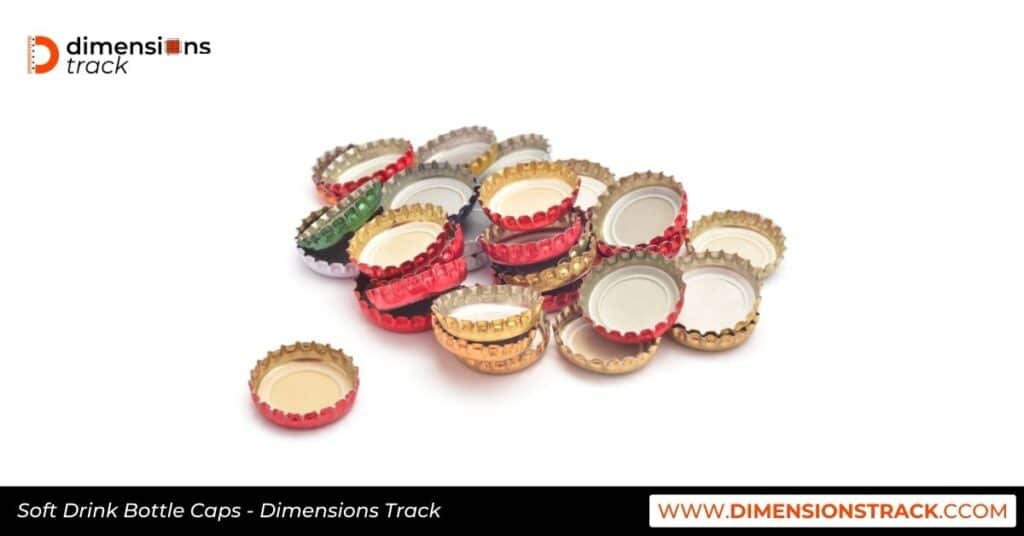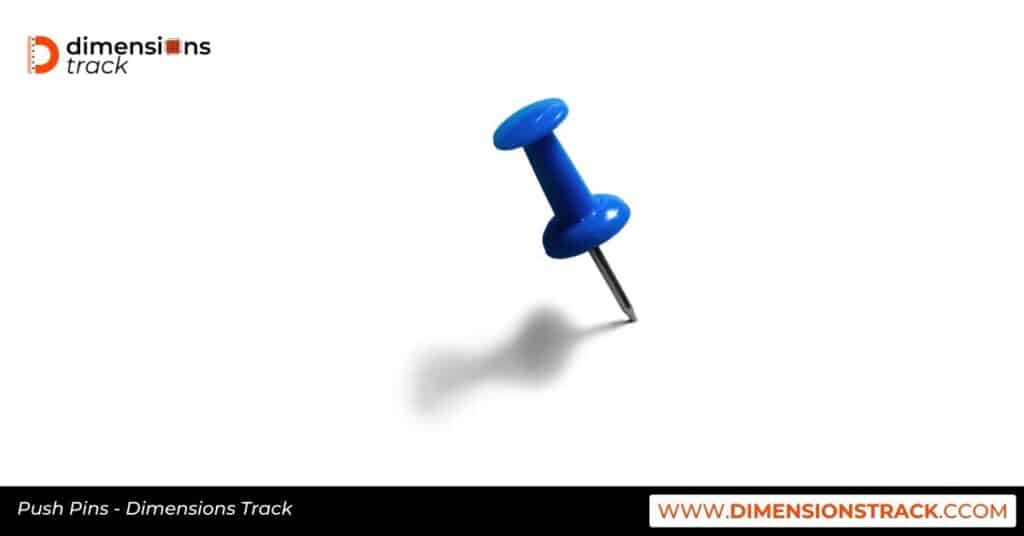Ever wondered just how small an inch really is? Though it might seem tiny, this measurement plays a huge role in our daily lives. From crafting to cooking, common things that are 1 inch long can be surprisingly useful to know!
How Long Is 1 Inch in cm?
Let’s get technical for a moment! One inch equals exactly 2.54 centimeters—a conversion that’s key for international conversations about measurement. Common things that are 1 inch long provide a practical reference, making it easier for everyone from scientists to crafters to speak the same measurement language.
In today’s global world, this conversion helps bridge the gap between imperial and metric systems. Whether you’re following a recipe from overseas or working on an international project, knowing this simple conversion can save you loads of time and headaches!
How Long Is 1 Inch Visually?
Think about the top part of your thumb – from the knuckle to the tip. For most adults, that’s pretty close to an inch! It’s nature’s built-in ruler, right at your fingertips (pun intended!).
This handy visual reference has been used for generations, especially when actual measuring tools weren’t around. Another quick visual? A standard paperclip when straightened out measures about an inch – talk about office supplies coming in clutch!
Fun Fact: The word ‘inch’ actually comes from the Latin word ‘uncia’, meaning one-twelfth – as in one-twelfth of a foot!
How Can It Be Measured 1 Inch Without a Ruler?
No ruler? No problem! Here are some clever tricks to measure an inch:
- Use your thumb width – it’s usually pretty close for most adults
- Grab a standard paperclip – they’re typically about an inch long
- Find a quarter – its diameter is almost exactly one inch
Below is the list of items that are 1 inch long:
1. Paper Clips

Those handy little wire wonders in your desk drawer are more than just paper-holding heroes – they’re also perfect inch-long references! Standard paper clips typically measure just about an inch in length when straightened out.
Modern paper clips come in a rainbow of colors and sizes, but the classic design has remained largely unchanged since its invention in the late 19th century. Their simple yet effective design makes them indispensable in offices, schools, and homes worldwide.
| Paper Clip Type | Length | Common Use | Material |
|---|---|---|---|
| Standard | 1 inch | Document binding | Steel wire |
| Jumbo | 1.5 inches | Multiple pages | Coated steel |
| Mini | 0.5 inches | Delicate papers | Thin wire |
| Plastic-coated | 1 inch | Color coding | Steel with plastic |
2. Soft Drink Bottle Caps

That cap on your favorite soda? It’s a perfect inch in diameter! These little plastic or metal disks do more than just keep your fizzy drinks fresh – they’re also handy measuring tools.
Bottle cap designs have evolved significantly over the years, from the classic crown cap to modern twist-offs, but their diameter has remained consistently close to one inch. This standardization helps beverage companies maintain efficient production lines while ensuring compatibility across different bottle types.
Ever notice how satisfying it is to pop off a bottle cap? That’s no accident! Manufacturers carefully design these inch-wide caps to provide just the right amount of resistance, keeping your drink sealed tight while still being easy enough to open.
3. Virginia Peanut

The Virginia peanut, often called the “Cadillac of Peanuts,” typically grows to about an inch in length. These larger-than-average legumes are prized for their size and flavor, making them perfect for roasting and snacking.
These peanuts aren’t just big – they’re packed with history too! Virginia peanuts have been grown in the American Southeast since the colonial era, becoming an important part of the region’s agricultural heritage. Despite their name, they’re now grown in several states besides Virginia.
These inch-long nuts are actually not nuts at all – they’re legumes! Like their cousins peas and beans, peanuts grow underground in pods, developing their distinctive size and shape over several months of growth.
4. Diameter Of US Quarter

A US quarter isn’t just pocket change – it’s also a perfectly portable inch-measuring tool! The diameter of these common coins measures almost exactly one inch, making them a handy reference when you need to quickly check a measurement.
| Quarter Type | Year Introduced | Weight | Edge Design |
|---|---|---|---|
| Washington | 1932 | 5.67g | 119 reeds |
| Bicentennial | 1976 | 5.67g | 119 reeds |
| State Series | 1999 | 5.67g | 119 reeds |
| America the Beautiful | 2010 | 5.67g | 119 reeds |
Some coin collectors focus exclusively on quarters, drawn to their rich history and varied designs while maintaining that consistent one-inch diameter. The quarter’s size has remained unchanged since its introduction, despite numerous design changes over the years.
5. Sewing Pins

Sewing pins, those slender metal lifesavers for crafters and tailors, typically measure just about an inch in length. This seemingly arbitrary measurement is actually the result of centuries of refinement, finding the perfect balance between usability and effectiveness.
These tiny tools pack a surprising amount of engineering into their inch-long frame. The shaft is designed to be thin enough to slip through fabric fibers without damaging them, while still being strong enough to hold layers together. The point is precisely sharpened to pierce material easily, and the head is sized just right for gripping.
Modern sewing pins come in a variety of specialized designs, but most stick to that tried-and-true one-inch length. From quilting pins to silk pins, this universal measurement ensures compatibility with sewing techniques and tools across the board.
6. Adult Thumb From Knuckle To Tip

Nature gave us a built-in measuring tool – the top segment of an adult thumb typically measures close to an inch! This handy (pun intended!) anatomical feature has been used for rough measurements throughout history.
Our thumbs evolved to help us grip and manipulate objects, but their standardized size makes them surprisingly reliable measuring devices. While there’s some variation between individuals, the consistency of this measurement across populations is remarkable.
| Thumb Measurement | Average Length | Common Use | Variation Range |
|---|---|---|---|
| Male top joint | 1.1 inches | Quick estimates | 0.9-1.3 inches |
| Female top joint | 0.95 inches | Crafting guide | 0.8-1.1 inches |
| Child top joint | 0.7 inches | Learning tool | 0.5-0.9 inches |
| Thumb width | 0.8 inches | Gauge reference | 0.7-1.0 inches |
7. HP Keyboard Control Key

That Control key you’re always using for shortcuts? On most HP keyboards, it measures about an inch wide! This standardized size isn’t just a random choice – it’s carefully designed for optimal typing ergonomics.
Keyboard designers spend countless hours determining the perfect key sizes for different functions. The one-inch Control key provides enough surface area to be easily located and pressed without looking, while not taking up too much valuable keyboard real estate.
Despite the trend toward smaller, more compact keyboards, the Control key has maintained its approximately one-inch width. This consistency helps users transition between different keyboards without losing productivity or comfort.
8. Push Pins

Those colorful little fasteners holding up your bulletin board notices are precisely engineered to be about an inch long. The standard push pin combines a sharp metal point with a plastic or metal head, creating a perfect balance of penetration and gripping surface.
Push pins have evolved from simple office supplies to come in a variety of designs and styles, but most maintain that crucial one-inch length. This size ensures the pin can securely fasten multiple layers while remaining easy to insert and remove.
| Push Pin Type | Head Diameter | Point Length | Common Use |
|---|---|---|---|
| Standard | 0.4 inches | 0.6 inches | Paper posting |
| Decorative | 0.5 inches | 0.5 inches | Crafting |
| Map pins | 0.2 inches | 0.8 inches | Precision marking |
| Clear pins | 0.4 inches | 0.6 inches | Invisible holding |
9. Standard American Dice

A standard six-sided die measures approximately one inch on each side. This uniform size ensures fair gameplay and comfortable handling, making it the perfect dimension for everything from board games to casino craps.
The history of dice stretches back over 5,000 years, but the standardization to one-inch sides is relatively recent. This size was found to be ideal – large enough to read easily and satisfying to roll, yet small enough to be portable and manageable.
Precision dice manufacturers painstakingly ensure each side measures exactly one inch, with tolerances often less than 0.0005 inches. This attention to detail guarantees that whether you’re playing Yahtzee or teaching probability, you’ve got a perfect cubic inch in your hands.
10. Sugar Cube

A standard sugar cube isn’t just a convenient way to sweeten your tea – it’s also a nearly perfect one-inch cube! These precisely measured sweeteners were invented in 1841 by Jakub Kryštof Rad, reportedly at the request of his wife who had cut her finger while cutting sugar from a loaf.
Modern sugar cubes are manufactured using specialized machinery that compresses granulated sugar into precise one-inch dimensions. This standardization ensures consistent sweetness and makes them perfect for recipes that call for specific amounts of sugar.
Beyond their culinary uses, sugar cubes have found surprising applications in fields from chemistry education to art. Their uniform size makes them ideal for demonstrations and creative projects where precise measurements matter.
11. Military Challenge Coins

While military challenge coins come in various sizes, one common variant measures exactly one inch in diameter. These meaningful tokens of recognition and camaraderie are carefully sized to be easily carried while still displaying detailed insignias and designs.
The tradition of challenge coins dates back to World War I, but the standardization of sizes, including the one-inch variant, came later as their popularity grew. The compact size makes them perfect for discreet carrying in a pocket or wallet, ready to be produced during traditional “coin checks.”
These inch-wide coins pack a lot of symbolism and craftsmanship into their small size. Using advanced minting techniques, artisans can create intricate designs that tell stories of service, unity, and achievement – all within the confines of a single inch.
Final Thoughts
From the tiny tools in your sewing kit to the dice in your board game collection, one-inch measurements are all around us! Understanding these common references can make estimating measurements a breeze when you don’t have a ruler handy.
Next time you need to quickly gauge an inch, just remember: whether you use your thumb, grab a quarter, or reach for a sugar cube, you’ve got plenty of options right at your fingertips. It’s amazing how such a small measurement can make such a big difference in our daily lives!

Henry Martin is a dedicated author at Dimensions Track, specializing in creating informative guides on the dimensions and measurements of various objects. With a passion for providing precise and reliable information, Henry helps readers make well-informed decisions about everyday products and spaces. His attention to detail ensures that each guide is thorough, easy to understand, and packed with useful insights for anyone seeking accurate measurements.







